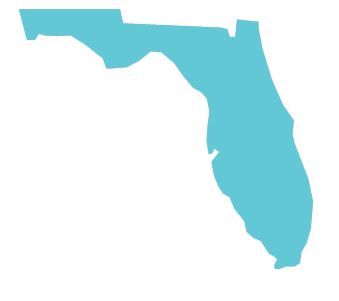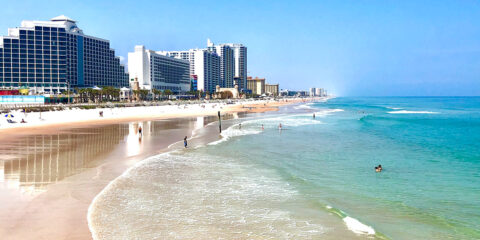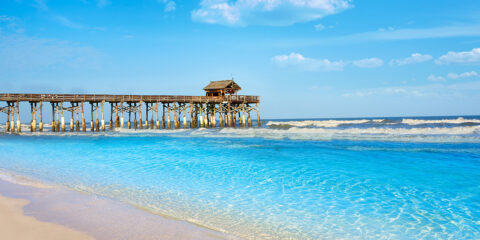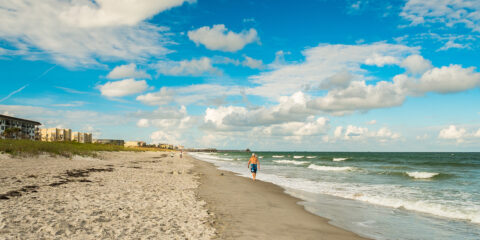Treasure On The Treasure Coast?
The Treasure Coast in Florida is known for more than just its scenic beauty and recreational activities—it gained its name from the numerous treasures that have been discovered off its shores. The region holds a captivating history of shipwrecks and lost treasures, attracting treasure hunters and enthusiasts from around the world. Let’s dive into the intriguing tales of treasure hunting on the Treasure Coast.
The Legend of the 1715 Spanish Treasure Fleet
One of the most famous stories associated with treasure hunting on the Treasure Coast dates back to July 31, 1715, when a fleet of Spanish ships laden with treasures from the New World encountered a hurricane. The fleet, consisting of 11 ships known as the 1715 Spanish Treasure Fleet, wrecked along the coastline, scattering gold, silver, and other valuable artifacts across the ocean floor. Over the centuries, these shipwrecks have captivated treasure hunters, and to this day, divers and salvage companies continue to search for lost riches along the Treasure Coast.
Mel Fisher’s Discovery of the Atocha
Perhaps the most renowned treasure discovery in recent history occurred off the coast of the Treasure Coast. Mel Fisher, a treasure hunter, dedicated over 16 years of his life searching for the Spanish galleon Nuestra Señora de Atocha, which sank in 1622. His perseverance paid off in 1985 when he finally located the sunken ship and recovered an astonishing $450 million worth of gold, silver, and precious gems. The discovery of the Atocha brought attention and excitement to the Treasure Coast and further fueled the dreams of treasure seekers.
Modern-Day Treasure Hunting
Today, treasure hunting on the Treasure Coast continues to intrigue both amateurs and professionals alike. The region’s warm waters, coupled with its rich maritime history, attract divers and treasure hunters in search of buried fortunes. Many individuals and organizations obtain permits and licenses to explore designated areas where shipwrecks are known to exist. Advanced equipment and technologies, such as metal detectors, sonar systems, and remotely operated vehicles, assist in the search and recovery efforts.
It’s important to note that treasure hunting on the Treasure Coast is regulated by state and federal laws. The State of Florida, in partnership with organizations like the Division of Historical Resources, ensures that historic shipwrecks and their associated artifacts are protected and preserved. Treasure hunters must obtain proper permits and follow ethical guidelines to ensure the integrity of historical sites and the preservation of their cultural value.
While finding treasure on the Treasure Coast requires expertise, perseverance, and adherence to regulations, the allure of discovering lost riches and uncovering pieces of history continues to captivate treasure hunters and enthusiasts. Whether you’re a history buff, an adventure seeker, or simply intrigued by tales of hidden fortunes, the Treasure Coast’s treasure hunting legacy adds an extra layer of intrigue to this captivating region of Florida.
Beyond Treasure Hunting
The Treasure Coast is a mesmerizing stretch of coastline on the eastern side of the state. Renowned for its amazing beaches, vibrant marine life, and rich history, this region is a true gem waiting to be explored. Whether you’re seeking an idyllic beach vacation, thrilling outdoor adventures, or a glimpse into the past, the Treasure Coast has something for everyone.
Treasure Coast Museums and Exhibits
To learn more about the history of treasure hunting on the Treasure Coast, visitors can explore various museums and exhibits dedicated to showcasing the region’s maritime heritage. For example, the Mel Fisher’s Treasure Museum in Sebastian provides an in-depth look into Mel Fisher’s remarkable discoveries and the techniques used in underwater archaeology. The McLarty Treasure Museum in Vero Beach offers exhibits that highlight the stories of the 1715 Spanish Treasure Fleet and the treasures recovered from those shipwrecks.
Beaches and Natural Beauty
The Treasure Coast boasts some of the most picturesque beaches in Florida, making it a haven for sunseekers and nature enthusiasts alike. One of the region’s highlights is the iconic Bathtub Reef Beach in Stuart. Its shallow waters and protected reef make it a fantastic spot for snorkeling and swimming. Just a short drive away, you’ll find Jensen Beach, a family-friendly destination with wide sandy shores and gentle waves. For a touch of seclusion, head to Blowing Rocks Preserve in Hobe Sound, where towering limestone formations meet the crashing waves, creating a truly awe-inspiring sight.
Vero Beach is a popular area with plenty of public beach access and a number of full-service parks. Within the city of Vero Beach, FL, you will find several incredible beaches including:
- Wabasso Beach Park – featuring wide, quiet beaches that are perfect for swimming.
- Golden Sands Beach Park – a traditional beach park with lifeguards, grills and picnic area, dressing facilities, restrooms and showers. It’s a great place if you feel like snorkeling or scuba diving.
- Jaycee Park – more than eight acres of oceanfront park perfect for family gatherings. There is a playground, a restaurant, a scenic boardwalk, a large picnic area and a buoyed swimming area.
- Humiston Beach Park – located in the heart of Vero Beach’s island shopping district.
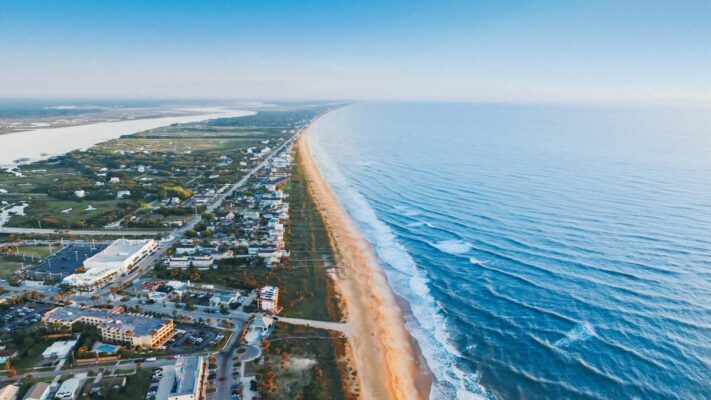

Marine Life and Eco-Tourism
The Treasure Coast offers exceptional opportunities to immerse yourself in its diverse marine ecosystem. Embark on a thrilling eco-tour and witness the magic of dolphins, manatees, and sea turtles in their natural habitat. The Indian River Lagoon, a designated National Estuary, is home to a staggering array of marine life and provides a tranquil setting for kayaking and paddleboarding. Additionally, the Florida Oceanographic Coastal Center in Stuart offers educational exhibits and interactive experiences to learn about the region’s delicate ecosystems and conservation efforts.
Historic Landmarks and Cultural Heritage
Delve into the rich history of the Treasure Coast by exploring its captivating landmarks and museums. Fort Pierce is a treasure trove of historical sites, including the Navy SEAL Museum, the UDT-SEAL Museum, and the St. Lucie County Regional History Center. Venture further south to Vero Beach, where the renowned McKee Botanical Garden invites visitors to stroll through lush gardens and admire its historic structures. Don’t miss the opportunity to visit the Elliott Museum, showcasing an impressive collection of classic cars, art, and local history.
Outdoor Adventures and Recreation
Beyond its beautiful beaches, the Treasure Coast offers endless opportunities for outdoor enthusiasts. Hiking and wildlife spotting at the Jonathan Dickinson State Park in Hobe Sound are popular activities, while fishing enthusiasts can cast their lines from various piers or embark on thrilling deep-sea fishing charters. For a unique experience, hop on an airboat and explore the pristine wetlands of the St. Lucie River and Lake Okeechobee.
Shopping and Dining
Indulge in a memorable shopping and dining experience on the Treasure Coast. Historic downtown Stuart and Fort Pierce are brimming with charming boutiques, art galleries, and local shops. Treat your taste buds to fresh seafood at waterfront restaurants, where you can savor delectable dishes while enjoying breathtaking views of the ocean or river. From laid-back beachfront eateries to upscale dining establishments, the culinary scene on the Treasure Coast caters to all palates.
Florida’s Treasure Coast offers a wealth of natural beauty, fascinating history, and exciting recreational opportunities. Whether you’re seeking relaxation on pristine beaches, immersing yourself in the region’s diverse marine life, or exploring its rich heritage, the Treasure Coast is a destination that promises an unforgettable experience. From the breathtaking coastline to the vibrant cultural scene, this hidden gem in Florida is truly a seaside paradise waiting to be discovered.
